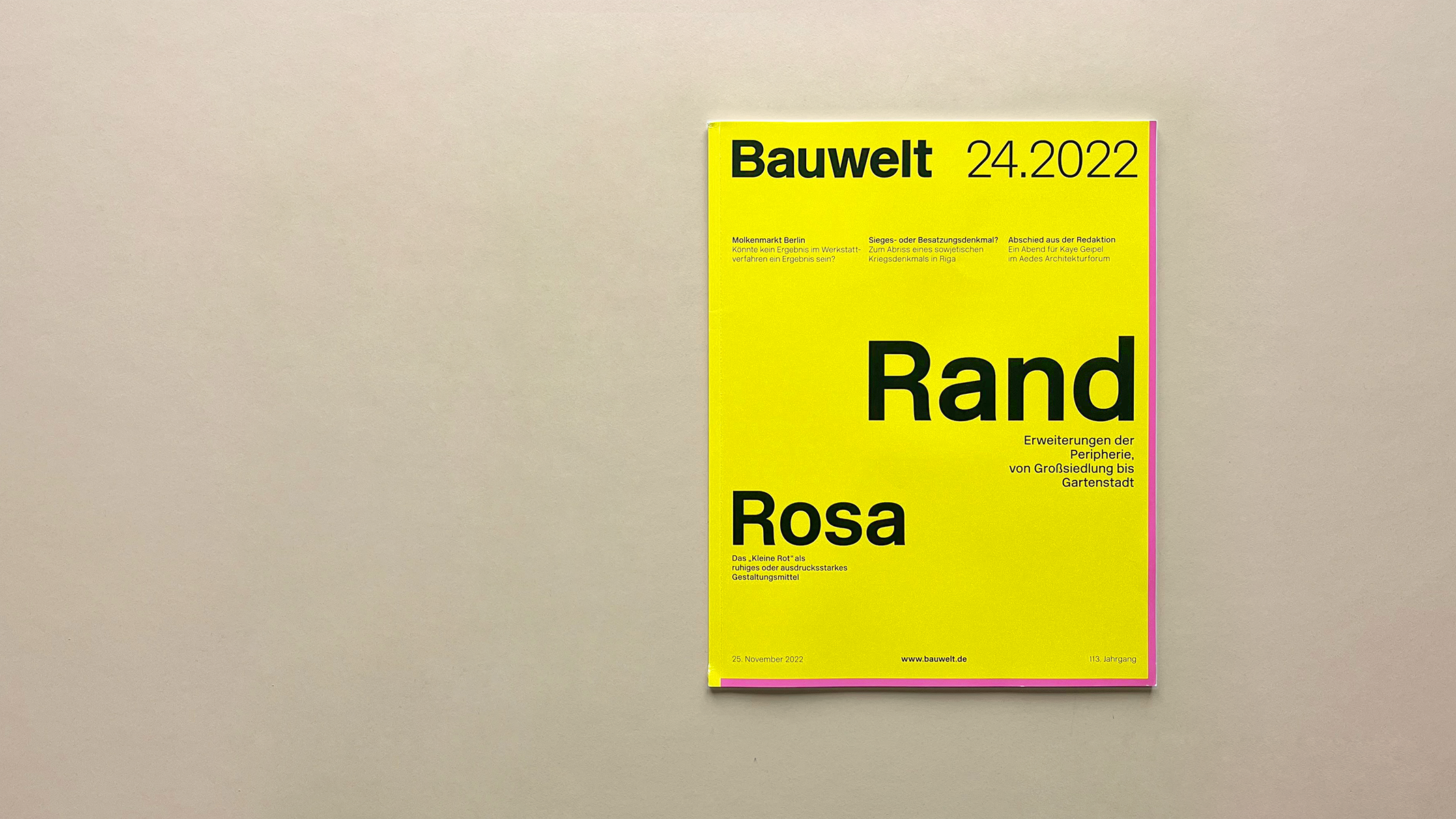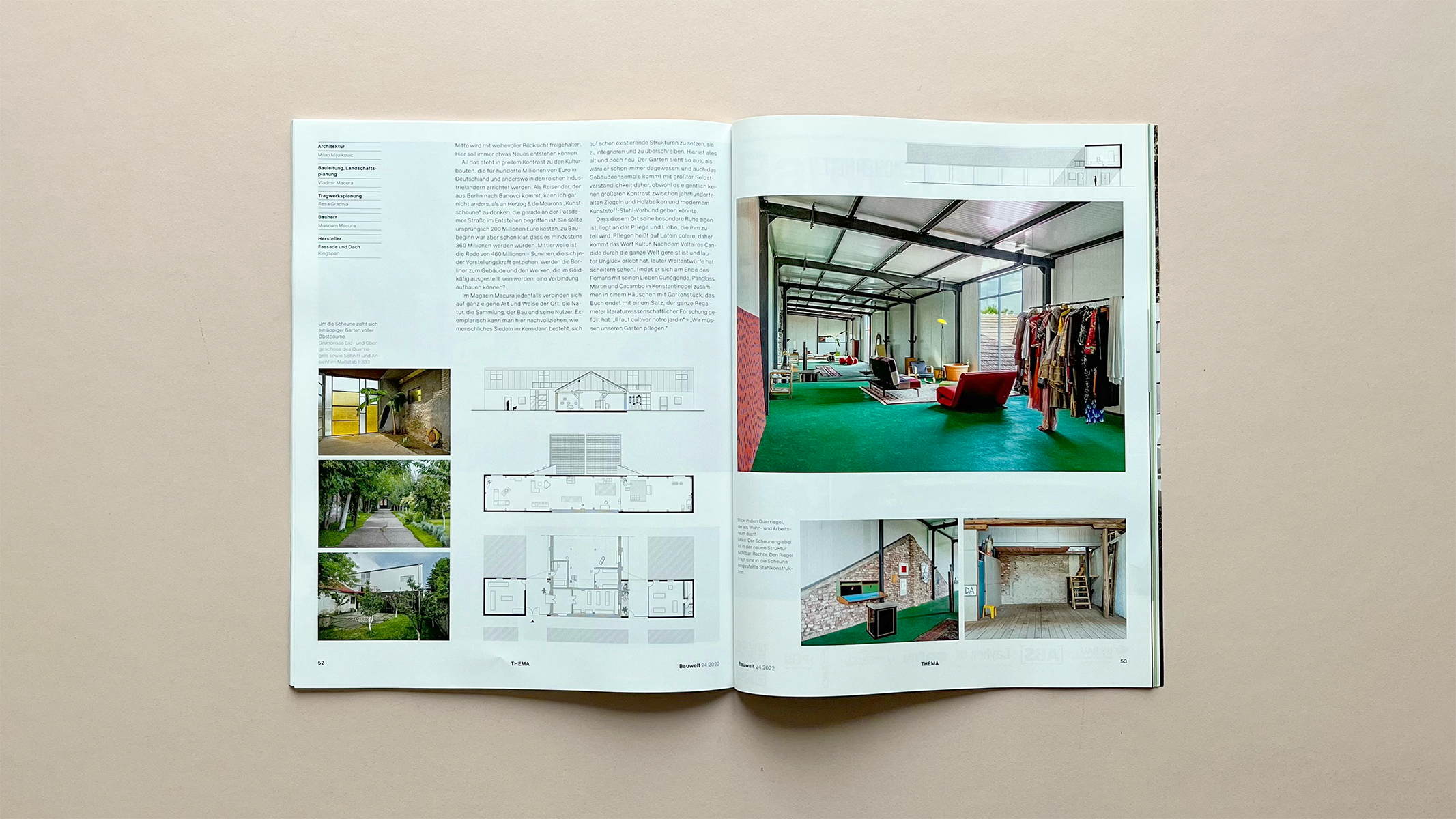PARADISE GARDEN IN PINK
In
a village on the Danube near Belgrade, an art collector has bought on
old barn and turned it into something new which is much more than
just an exhibition space.
Text Leonardo Costadura Photos Robert Slavik
German Version Here




“What is
art, Vladimir?“ I ask the tanned, wiry man. Vladimir Macura comes
from Krajina, the formerly predominantly Serbian-populated region in
present-day Croatia, and moved at the beginning of the nineties to
Vojvodina, on the big river. To be more exact, to kilometre 1701 of
the Danube, in the old—in terms of name, architecture, and
demographics—village of Stari Banovci. The large pole with the
distance marker stands in his garden, nearly invisible among the
artworks and trees. “Art is love,” says Vladimir. That simple.
Love of the essence of things, one could say, for here in “Magacin
Macura,” everything has its place and its appreciation: the apple
trees (each a different variety), the large banana plant, the old
blue enamelled pots, and many other objects of every kind, which make
up only a part of his art collection, for collecting is Macura's
passion. “At some point, you get a bit obsessed,” he added
laconically.
![]()
Art, however, is also based on the love of
people and their capabilities. During a week at the end of August,
when a large heatwave was replaced by grey but mild drizzly weather,
a group of Viennese architectural students gathered at Magacin
Macura, a barn which, as if it were the most natural thing in the
world, has been turned into a museum over the last few years. These
days were about exploring their possibilities and ideas; they were
here to implement their projects in small working groups. Some, for
instance, were sewing a picnic blanket made from old clothes. They
collected the pieces of fabric in the village and wanted to invite
the villagers to join them for a meal together under the trees at the
end of the week. Others had cycled here from Vienna and filmed
the trip. “Yumeji’s theme” on Radio Beograd 2 danced around the
room while the rain played a light arpeggio on the roof of the barn.
On their first morning in Banovci, the group swept the wooden floor,
like the monks of a Zen monastery sweeping the forest floor.
The village where the barn is located is
roughly thirty kilometres northwest of Belgrade. A boat drifts down
the Danube, which is mile-wide at this point. Silence, woods, grey
sky, grey water. The barn sits perpendicular to the river, like on a
balcony on the edge of a cliff overlooking the river. A large red
platform spans the difference in level. It is shaped like an A so you
can walk up the stairs on both sides, look out across the landscape
as if from a speaker’s podium and, if one so wishes, deliver a
speech to the waves, the birds, and the trees.
![]()
A like “Alles”
(anything or rather everything), a demand that is also found on a red flag in the museum.
It hangs seemingly at random from on old beam and is transformed here
into a description of the state of things, for the Magacin is a space
in which anything is possible: a place to withdraw, meet, talk, be
silent, celebrate, and work. “Architecture is actually what comes
after the construction work—the use of the building,” says Milan
Mijalkovic, the architect of the museum. He is also responsible for
the Anything flag and the platform along the Danube.
Mijalkovic is not only an architect, but an
artist, too. He contemplates the present from an apparently naive, an
apparently outside perspective and digs along the roots through the
temporal strata of society in search of optimistic drafts of the
future. What he has made here is sustainable, both in the current and
traditional sense of the word. He is convinced that “only that
which is created using as few means as possible is truly
sustainable”. He only had a budget of 30,000 euros to transform the
barn into a museum. Mijalkovic solved the challenge by first changing
as little as possible to the existing structure while at the same
time minimizing material costs through recycling. For this reason, he
put that much more heart and soul into the project—everything has
been carefully thought out and executed with care down to the last
detail.
Magacin Macura is a space in which anything is possible: a place to withdraw, meet, talk, be silent, celebrate, and work.
A rectangle made of sandwich panels sits
horizontally atop the barn on the streetside. The pink colour of the
facade serves as a signal, “Hey, here is something to see. Come
here,” the building calls to cars passing by and the local
inhabitants. The simple warehouse architecture of the rectangle is a
typological extension or contemporary equivalent of the centuries-old
barn. The existing building had to mainly be cleared of the trash
that had accumulated over the years. Otherwise, the only major change
was the skylight windows, which the architect cut into the ceiling.
On the riverside, two wooden compartments were built on the roof of
the barn, in which two common rooms are located.
When you enter from the street through the
stained-glass door, you first have to walk through the garden along
the entire length of the barn, among the apple trees and shrubs. This
offers a view of a few large trees, a long table, and finally the
Danube. In this way, Mijalkovic emphasises the length of the building
and thus makes visitors aware that they should leave themselves
plenty of time for their visit. The phrase the “depth of space,”
which Karl Heinz Bohrer once used to describe football coverage, is
understood here both literally and archaeologically, for this hall is
roughly 100-meters deep. Inside, the beams give rhythm to the
load-bearing structure of the space, which reminds one a little of
the interior of an old ship. The scuffed wooden floor and the rough
brick walls complete the background against which the artworks of Yugoslavian Dadaists and
Zenitists, a huge collection of chairs, chests of drawers, tables,
books, and bicycles, are distributed along the entire length of the
walls. The middle is kept clear out of solemn respect. There should
always be room for something new to emerge.
![]()
All this stands in glaring contrast to the
cultural centres being built for hundreds of millions of euros in
Germany and elsewhere in rich industrial countries. As someone who
has travelled from Berlin to Banovci, I cannot help but think of
Herzog & de Meuron's Kunstscheune(Art Barn), which is currently in the process of being constructed in
Postdamer Straße. It was originally supposed to cost 200 million
euros, but it was already clear when construction began that it would
cost at least 360 million. In the meantime, there is talk of 460
million—amounts that defy the limits of imagination. Will the
inhabitants of Berlin be able to develop a connection to the building
and its artworks which will be exhibited in a golden cage?
At any rate, in Magacin Macura, the place,
nature, the collection, the building, and its users develop their
very own unique relationship. In exemplary fashion, it helps one to
understand how human settlement basically involves starting
with existing structures and then integrating and reusing them. Here
everything is old and new at the same time. The garden looks as if it
were always there, and the ensemble of buildings also seems quite
natural, although there couldn’t be a bigger contrast between the
centuries-old bricks and wooden beams and the modern combination of
plastic and steel.
This place owes its unique sense of
tranquillity to the love and care given it. Cultivation means colerein Latin, which is where the word ‘culture’ comes from. After
Voltaire’s Candide had travelled all over the world and experienced
one misfortune after the other, watched one concept of the world
after the other fail, he and his companions Cunégonde, Pangloss,
Martin, and Cacambo find themselves back once again in Constantinople
in a small house with a garden; the book ends with a sentence that
has filled entire book shelves of literary research: “Il
faut cultiver notre jardin”—
“We must cultivate our garden.”
2022
Bauwelt 24.2022
Translation : Mark Miscovich
Bauwelt 24.2022
Translation : Mark Miscovich
© 2025 Milan Mijalkovic. All rights reserved.
